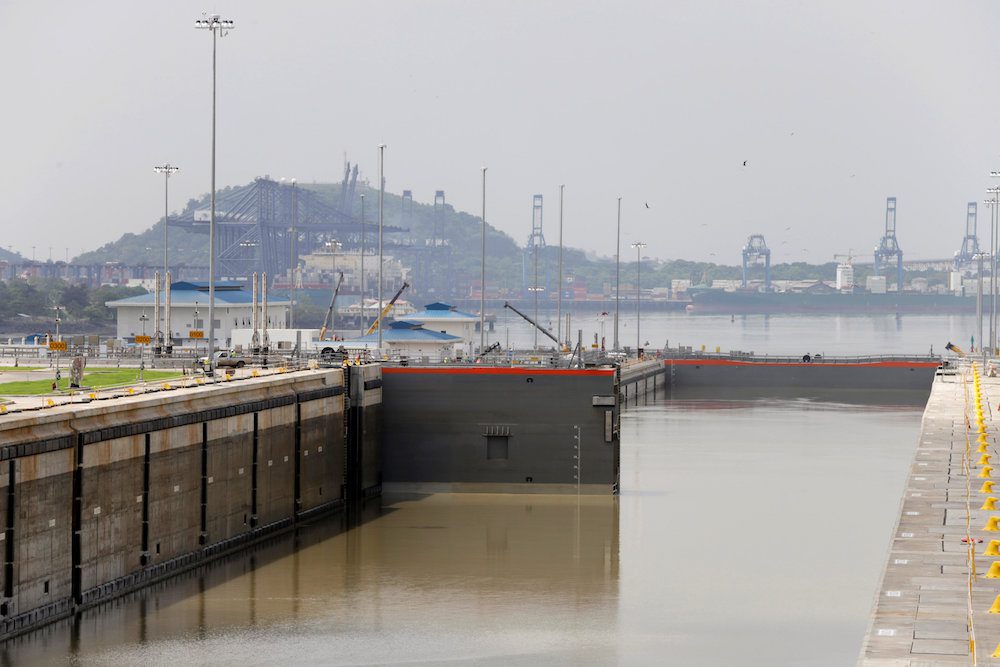A floodgate test is conducted during a media visit to view the new set of locks of the Panama Canal Expansion Project, on the Pacific side of the Panama Canal, on the outskirts of Panama City June 6, 2016. REUTERS/Carlos Jasso
By Dan Murtaugh
(Bloomberg) — Asia’s going to have to wait a little longer for the flood of U.S. shale gas to reach its shores.
A global glut of liquefied natural gas has cut price differences between regions worldwide, leading traders to ship cargoes for shorter distances to save on freight costs, Citibank analysts including Anthony Yuen said in a report dated July 13. That means U.S. LNG may stay in the Western Hemisphere for the near future, even with last month’s Panama Canal expansion that can cut two weeks off journeys from America to Asia.
“The Panama Canal expansion, inaugurated on June 26, was once expected to be a game changer for U.S. LNG exports to Asia,” the analysts wrote in the note. “But against the backdrop of this major transition in the global LNG market, the prospects for U.S. LNG into Asia via the expanded canal look less promising, at least in the short-term.”
Only 6 percent of the global LNG tanker fleet could fit through the old Panama Canal. Now all but the largest class can sail via the waterway. That can cut as much as two weeks off trips from the Gulf Coast to Japan, reducing freight costs to 84 cents per million British thermal units from $1.20, according to Citigroup.
While that might help in the long term, currently those savings aren’t enough to make up for the compression of global gas prices. In October 2014, LNG in Singapore was $5 per million British thermal units more than gas in the U.K., which was in turn $5 more than in the U.S. Now all three prices are within about $2 of each other.
Regional Trade
The price convergence is a result of a global supply glut, as new production projects are starting up in Australia and the U.S. while demand shrinks in South Korea and Japan, the world’s largest importer of the fuel. The narrower differentials are encouraging trade to remain more regional, according to Citigroup.
That means the only Pacific market the Panama Canal might open for U.S. shale exporters is the west coast of South America. The first LNG cargo set to transit the expanded canal is a BP-owned tanker carrying shale gas from Louisiana to Chile.
“Global natural gas prices are converging as gas supply increases, sharply reducing market power held by some traditional exporters,” the analysts wrote. “After optimizing for shipping costs and factoring in shifting supply-demand balances, particularly as North Asian demand growth slows amid rising Australian supply, LNG trade may remain somewhat regionalized for now, even with the opening of the Panama Canal.”
© 2016 Bloomberg L.P

 Join The Club
Join The Club











